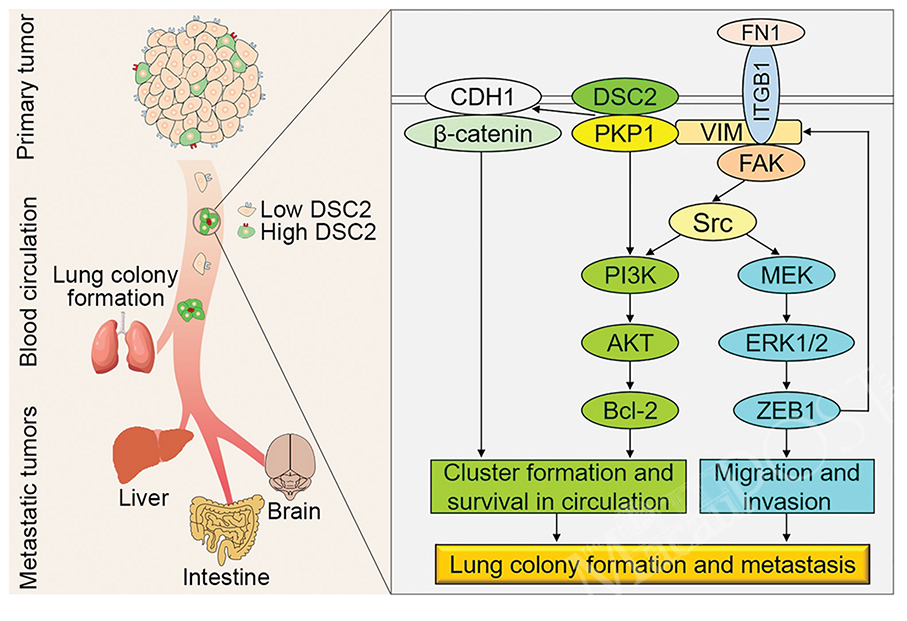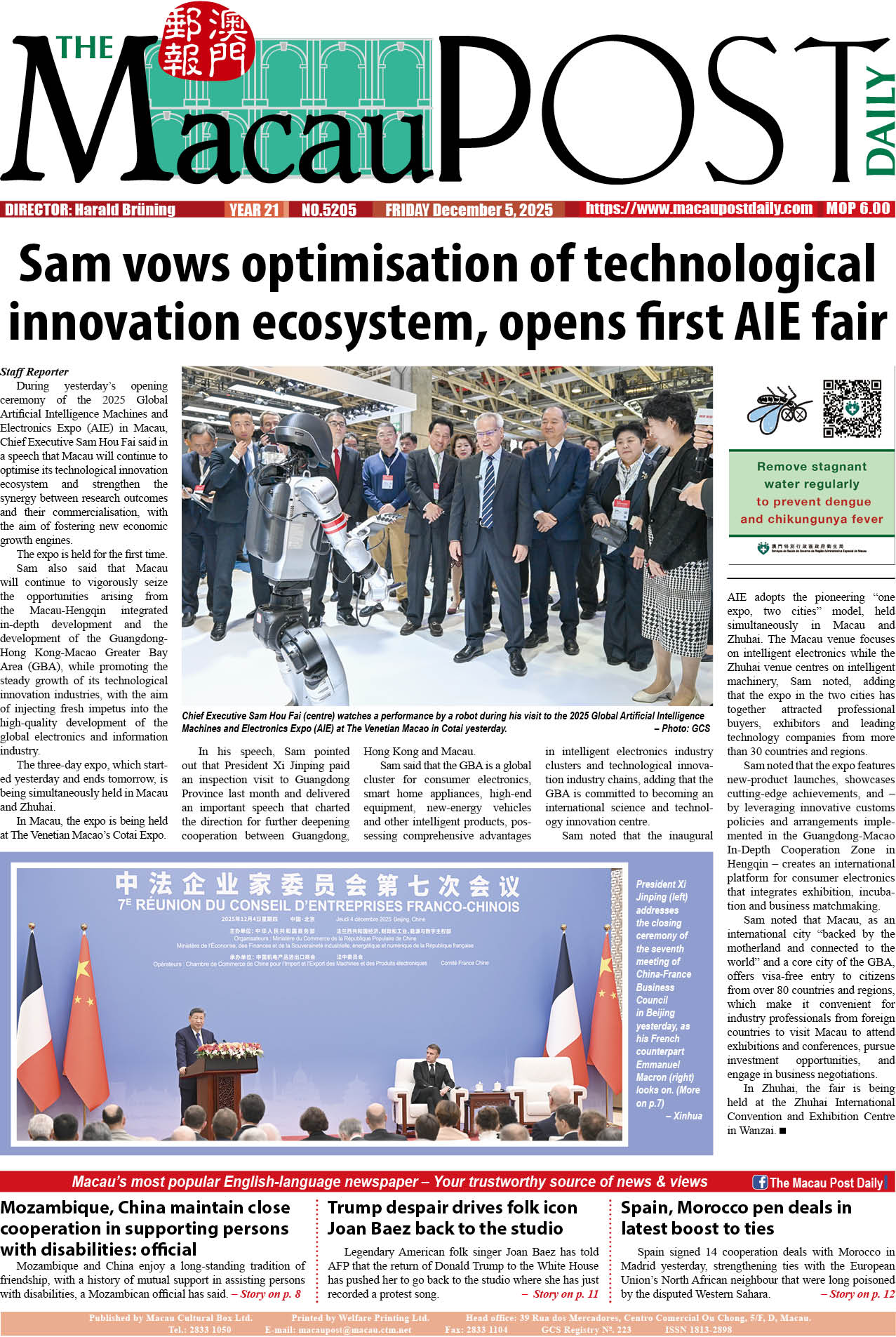The University of Macau (UM) announced in a statement earlier this week that a research team from the Faculty of Health Sciences (FHS) made a discovery that provides new insights into how circulating tumour cells survive in the circulatory system, which may help to develop new therapies to prevent the spread of cancer to different parts of the body.
The statement noted that Kathy Luo Qian authored the study while her PhD student, Li Koukou, was the first author. The statement pointed out that significant contributions were made by three other PhD students, Wu Renfei, Zhou Muya, and Tong Haibo.
The statement underlined that when tumour cells enter the blood stream, most of them die in the circulation, while surviving ones create metastases, where cancer spreads to a different body part, and can kill over 90 per cent of cancer patients. The statement highlighted the importance of investigating how tumour cells survive in blood circulation and form metastases, in order to set up new anti-metastasis therapies.
Metastasis is the development of secondary malignant growths at a distance from a primary site of cancer.
The statement pointed out that the researchers developed a “microfluidic circulation system” to separate breast cancer and lung cancer cells that could withstand “fluid shear stress”, which demonstrate a higher capability to create clusters, survive in circulation, and metastases formation in mice.
The statement said that it was also discovered that these shear stress-resistant cells showed between four and five times more desmocollin-2 (DSC2) and plakophilin-1 (PKP1) proteins, which enabled cancer cells to form clusters in circulation and “activated the PI3K/AKT/Bcl-2-mediated pathway” to reinforce cell survival.
The statement added that higher levels of DSC2 and PKP1 proteins were discovered in tumour samples from breast cancer and lung cancer patients, which are linked to a lower overall survival rate and worse disease results, making the proteins new biomarkers to discover and target “metastatic circulating tumour cells”.
The statement noted that the study has been published in the journal Science Advances, adding that the full text of the research article is available at https://www.science.org/doi/10.1126/sciadv.abg7265.

This image provided by the University of Macau shows the mechanism and signal pathways through which DSC2PKP1 and VIM support cluster formation, cell survival in circulation, lung colony formation, and metastasis.

This handout photo provided by the University of Macau shows the researchers Kathy Luo Qian (centre front), Li Koukou (third from right, back row), Zhou Muya (fourth right, back row), and Tong Haibo (second from left). The caption provided by the university did not identify the others.







